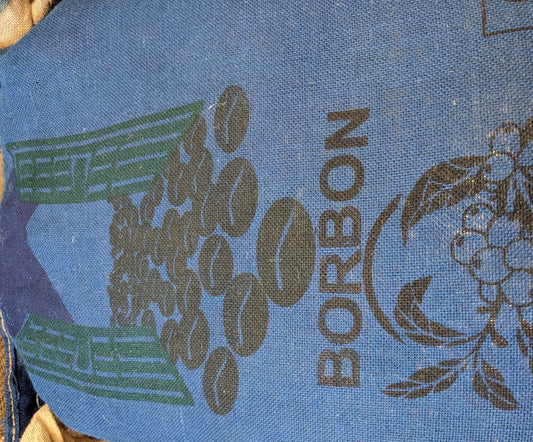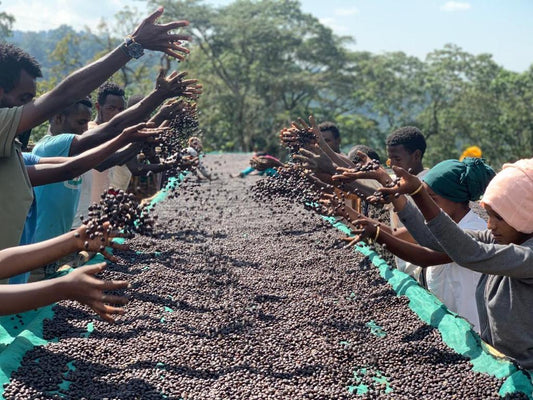If you're dipping a toe into pourover (pro tip: don't. It'll ruin your coffee and burn your foot too) or even if you're a seasoned pourover purist, you've probably noticed there are 2 main categories of pourover brewer.
You've got the conical, and the flat bottom brewers.
Good examples of a canonical brewer would be ones like the Hario V60 (our personal favorite - check out how to brew V60 with our brew guide for more on that), or the Kono.
Flat bottom brewers are ones like the Kalita Wave (another Kea Coffee go-to!), the April or the Orea V3.
And then there’s the Origami dripper that can do both, but anyway… that’s a topic for another day…
Generally speaking, almost all pourover brewers fall under either conical or flat bottom in design.
But what are the differences between a conical and a flat bottom pourover brewer? And how does the shape of your dripper affect the flavour in your cup?
Today, we’re taking a deeper dive to find out.
For anyone just wanting a quick skim read (because, let’s face it, this is the internet, and we’ve all got much better things to be consuming. Like this video of Daddy Hoff demo-ing your new breakfast obsession, for example), here’s the short answer:
Flat bottom brewers tend to produce more balanced cups. They do better at pulling out sweetness and body, but at the expense of covering up some of the acidity.
Conical pourover brewers, however, will usually highlight more acidity.
|
Characteristic/Attribute |
Conical Brewer |
Flat-Bottom Brewer |
|
Body |
Lighter |
Fuller |
|
Acidity |
More pronounced, brighter |
More subdued, mellow |
|
Sweetness |
Less pronounced |
More pronounced |
|
Bitterness |
Can be more pronounced with higher chances of uneven extractions |
More balanced |
And here’s a quote from a 2019 study by the Specialty Coffee Association, which sums up the flavor differences nicely:
“[...]we see that for a given roast (e.g., the light roast at left), the basket shape also yielded a meaningful difference. The flat-bottom basket yielded flavor attributes with more dried fruit, sweet, and floral flavor intensities, while the conical basket yielded more citrus, berry, and sour.” - Source: https://sca.coffee/sca-news/25-magazine/issue-8/english/flat-vs-cone-basket-shape-is-as-important-as-grind-size-in-drip-brew-coffee-25-magazine-issue-8
As we saw in the SCA study above, when all other variables are the same and only the shape of the brewer is changed, we see statistically significant differences in scoring across all attributes of taste.
Why do flat bottom drippers taste different to conical ones?
This is a complicated question that can get quite nerdy quite quickly.
It’s also an area that needs a lot more research still, before we can fully understand the science of why just the shape of the brewer alone has such a notable effect on flavor.
What we do know though, is that if we change the shape of the brewer, we change the shape of the coffee bed that the water has to pass through.
Changing the shape of the coffee bed, inevitably changes the way that the water can flow through.
We get different resistances, different heights of slurry for the same volume pours, and different flow rates.
And in turn, the nature of the extraction that’s taking place changes.
In coffee extraction, acidity tends to extract first, followed by sweetness, then body and finally bitterness. That’s a pretty huge over simplification, but as a high level way of thinking about extraction, it works.
Taking that rule and applying it to our flat bottom Vs conical brewer matchup, it’s possible that the geometry of the flat bottom brewer is allowing a more even extraction across the bed, which allows for more sweetness and body. Whereas conical brewers concentrate the flow of water through an ever narrowing bed of coffee, potentially leaving the grounds toward the top of the bed with less opportunity to push extractions further, and thus giving us a higher perceived acidity.
If you wanna go really deep on extraction theory, this post from James Perry is a great read.
Which is best for pourover? Flat bottom or conical brewers?
As we saw above, and as the SCA proved in their study, the differences in perceived acidity, sweetness and body between flat bottom and pour over brewers, is highly repeatable and predictable.
As is almost always the case in coffee, “better” or “best” is personal.
Conical brewers may suit those who prefer brighter, livelier coffees, while flat-bottom brewers might be ideal for those who enjoy sweeter, fuller-bodied cups.
Personal preference plays a big role here, but so too does the coffee you’re using.
If you’ve got a fruity Ethiopian natural for example, you might want to reach for a flat bottom brewer to help highlight those sweeter, fruitier flavors.
Or if you’ve got something like this Mexican that’s got notes of chocolate and lemon, you can dial up the sweetness and body with a flat bottom or turn up the citrus with a conical.
And half the fun in coffee is in experimenting and trying things out.
So grab a couple of different brewers and put the kettle on. Brew a conical and a flat bottom brew and compare them side by side. See what differences you spot.
Happy brewing!





